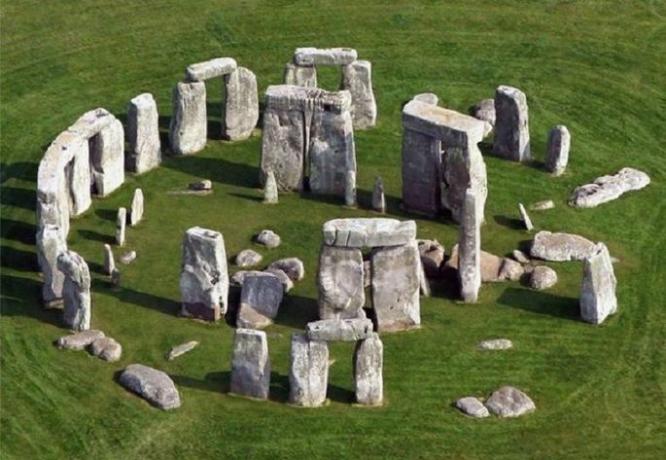Stonehenge it is the largest and best preserved remnant of the Neolithic Period, and to this day it is an enigma to scientists.
Located in Amesbury, England, the stone circle is dated 3100 BC. Ç. to 2075 a. Ç. and it may have served for different uses over the centuries.
Situated 137 kilometers from London, Stonehenge is one of the most visited monuments in the UK, with over 1.3 million tourists a year.
Stonehenge Construction
The construction of Stonehenge took about 2,000 years. The biggest stones came from Marlborough Downs, located 32 kilometers away. In turn, the smaller stones would have come from the Preseli Mountains, which are in Wales, about 250 kilometers away.
How they were transported remains a mystery. Would the builders have taken advantage of the winters to facilitate the landslide? Were they pulled by animals and men? These questions are still open.
construction utility
Today, Stonehenge is known to be the survivor of a large complex of structures that have disappeared. Evidence of this is the ditch that surrounds the entire complex, the three stone monoliths in the vicinity and evidence of other similar structures along the field.

Thus, archaeologists work with the hypothesis that Stonehenge would be one of the temples that would be scattered in that region.
Exactly what the monument was for is not known for sure. For the duration of its construction there are scholars who ponder that Stonehenge was erected to be a solar calendar and ended up being a cemetery. And there are those who maintain that it was both at the same time.
Recent archaeological research indicates that Stonehenge was used for ceremonial burial after the incineration of the body. After all, 56 graves were discovered containing the cremated bodies of at least 64 people who lived during the Neolithic.
Likewise, it served as a calendar where during the Midsummer, on June 21st, the sun rises exactly facing the main stone of Stonehenge.
This hypothesis reveals that Neolithic men already possessed advanced astronomical knowledge and hierarchy. Whoever was responsible for the burial ceremonies was certainly an outstanding member of the community respected by others.
In this way, Stonehenge is yet another proof of the urban revolution that prehistoric human beings were going through.

Myths about Stonehenge
The construction of Stonehenge was attributed to the Celts and the Wizard Merlin. However, these only reached the British Isles around the 5th century.
There is also, so far, no archaeological evidence that the druids held cults there. In any case, nowadays, the neo-pagan movement performs ceremonies on the stones.
Likewise, there are those who claim that Stonehenge served as an airfield for alien and extraterrestrial spacecraft. However, there is no evidence to confirm it.
Curiosities
- Stonehenge, Avebury and some surrounding locations have been listed as a UNESCO World Heritage Site since 1986.
- Currently, for security reasons, visitors cannot walk among the stones of the monument.



